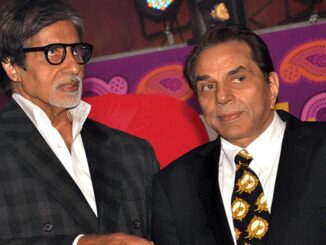
In recent years, a growing number of Bollywood’s top actresses have ventured beyond the camera and into the world of film production. With global stars like Anushka Sharma, Priyanka Chopra Jonas, Deepika Padukone, and Alia Bhatt launching their own production banners, it seemed like a new era was dawning — one where women would not only headline films but also shape them from behind the scenes. However, despite the ambition, visibility, and talent these stars bring to the table, many female-led production ventures have struggled to find consistent commercial success. The reasons behind this are complex and deeply rooted in the industry’s structure and longstanding biases.
The Burden of Expectations
One of the biggest hurdles that Bollywood actresses-turned-producers face is the weight of expectations — both from the industry and from audiences. When a leading lady takes on a production role, her project is often subjected to intense scrutiny. The bar is set impossibly high, and even a modest performance at the box office is viewed as a failure. Unlike male producers who are given room to stumble and grow, female producers are often expected to deliver groundbreaking content from day one. This double standard creates enormous pressure and leaves little room for creative experimentation or long-term development.
The “Niche Content” Trap
Many actresses who turn producers are passionate about telling stories that don’t usually get mainstream attention — narratives focused on women, social issues, or unconventional protagonists. While these films often earn critical acclaim, they are frequently labeled as “niche” and struggle to find widespread commercial appeal. For instance, Anushka Sharma’s Clean Slate Filmz has produced several impactful films and series like NH10 and Bulbbul, but they haven’t always translated into box-office blockbusters. The Indian market, still largely dominated by male-centric and mass-appeal storytelling, makes it harder for content-driven cinema led by women to achieve mainstream profitability.
Limited Access to Big-Budget Resources
While male-led production houses often have access to expansive financing, star-driven casts, and wide theatrical releases, female producers regularly face obstacles in securing similar resources. Despite their star power, many actresses encounter skepticism from investors and distributors when they pitch ambitious projects. This lack of trust results in smaller budgets, reduced marketing spends, and limited distribution — all of which affect a film’s potential to succeed.
Even well-established names like Priyanka Chopra have faced roadblocks. Her production house Purple Pebble Pictures has made commendable efforts to promote regional cinema, but sustaining such ventures requires consistent backing, which isn’t always forthcoming in a male-dominated financing ecosystem.
Balancing Stardom and Strategy
Many actresses-turned-producers are also managing full-fledged acting careers, brand endorsements, international appearances, and personal commitments. The sheer multitasking involved can dilute the time and energy required to nurture production companies. Unlike male counterparts who often delegate creative responsibilities or form strong business partnerships, many female producers remain deeply hands-on — which, while admirable, can also become unsustainable in the long run.
Moreover, the decision to headline their own productions can also backfire. While the intention may be to ensure visibility and control, audiences don’t always receive such projects well, especially if the narrative feels self-serving or lacks freshness.
Industry Bias and Gatekeeping
Perhaps the most significant challenge female producers face is systemic bias. The film industry, like many others, has long been governed by entrenched networks and male-centric power structures. Despite progress, there’s still a prevalent notion that women, especially actresses, are better suited for on-screen roles rather than business leadership. This subconscious gatekeeping creates invisible barriers for women trying to establish a presence behind the camera.
In contrast, male actors transitioning into production—like Shah Rukh Khan (Red Chillies Entertainment), Aamir Khan (Aamir Khan Productions), and Ajay Devgn (Ajay Devgn FFilms)—are met with instant credibility and sizable backing. Female producers often have to fight twice as hard to earn the same level of industry respect.
A Glimmer of Change
Despite these challenges, many female producers are slowly but steadily changing the narrative. Alia Bhatt’s Darlings, produced under her banner Eternal Sunshine Productions, was a streaming success and earned praise for its bold storytelling. Deepika Padukone’s KA Productions is also eyeing larger, international co-productions. Streaming platforms have opened up new avenues, providing more space for creative voices that may not thrive in the conventional theatrical model.
Additionally, collectives and organizations such as Women in Film and Television India (WIFT) and Guneet Monga’s Women In Film India (WIFI) are creating support systems and mentoring opportunities to help female producers navigate the industry’s challenges.
In Conclusion
The journey for Bollywood’s leading ladies as producers has been anything but easy. While their entry into production has added much-needed diversity to Indian cinema, their struggles underline a greater need for systemic change. For true parity, the industry must not only celebrate their creative vision but also invest in their ideas, fund their stories, and trust their leadership. Only then can female-led production houses thrive not just as exceptions, but as an integral part of the cinematic ecosystem.
In the meantime, these trailblazing women continue to fight stereotypes and build legacies, one film at a time — rewriting the rules, both in front of and behind the camera.



